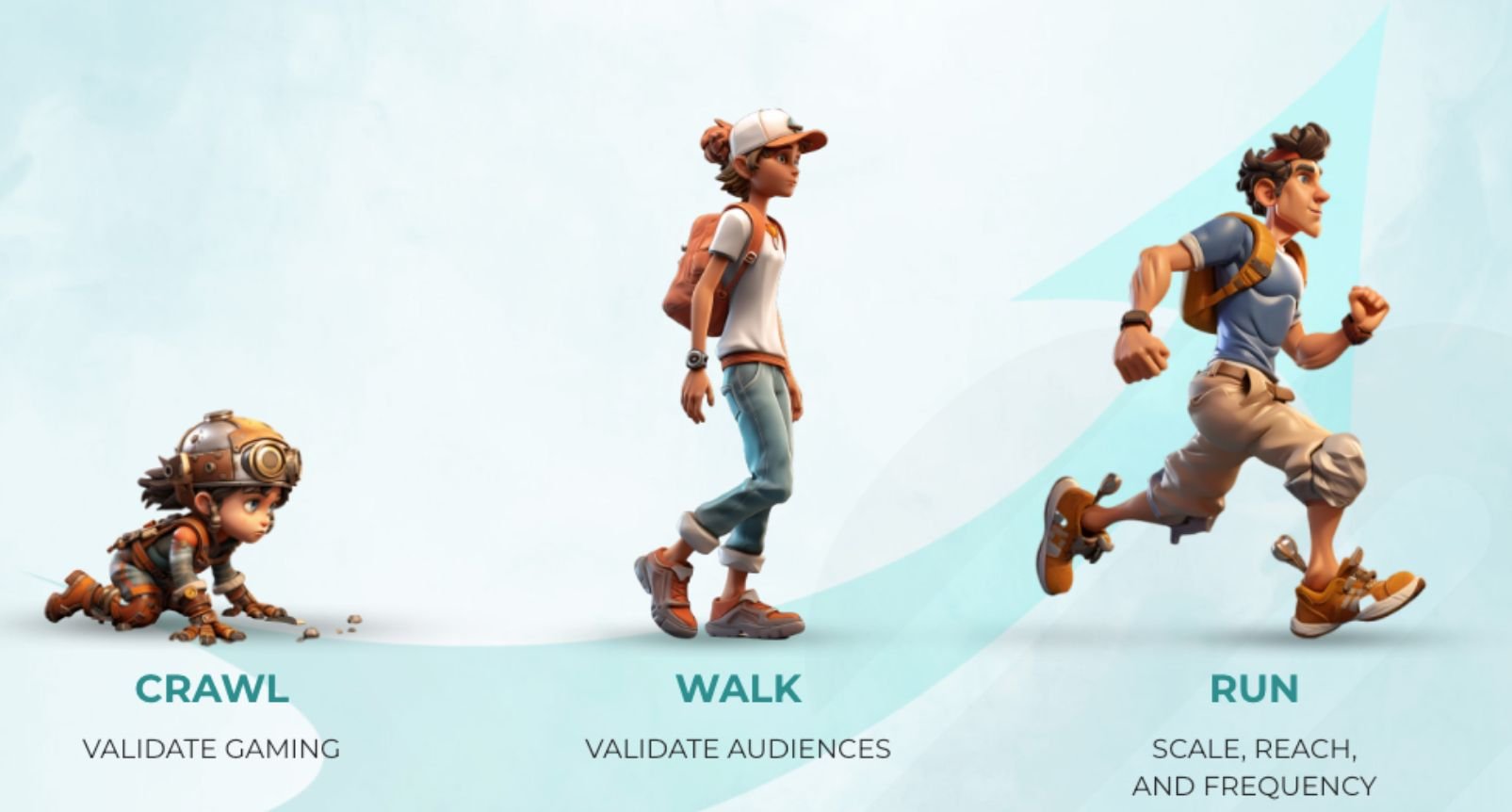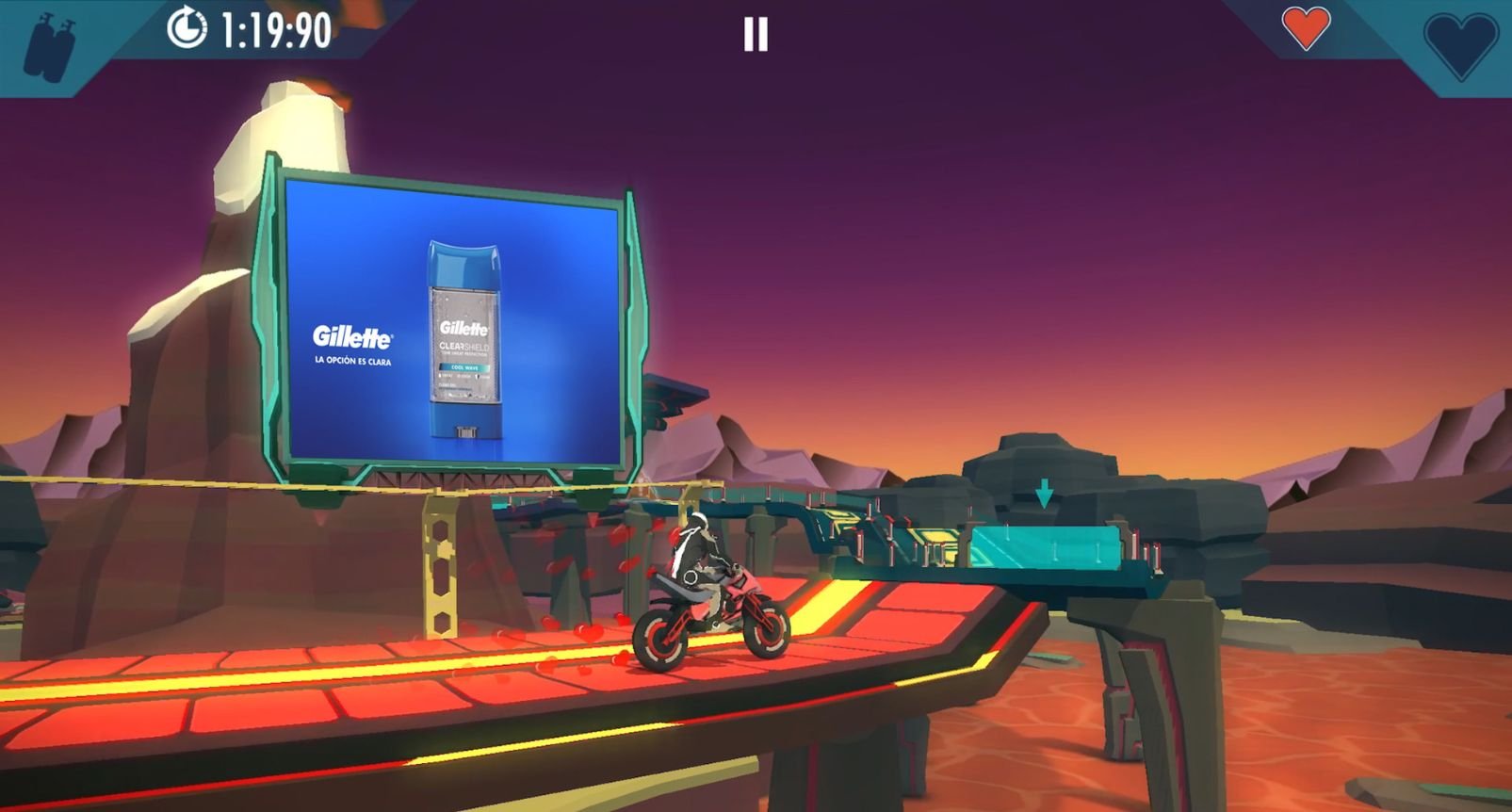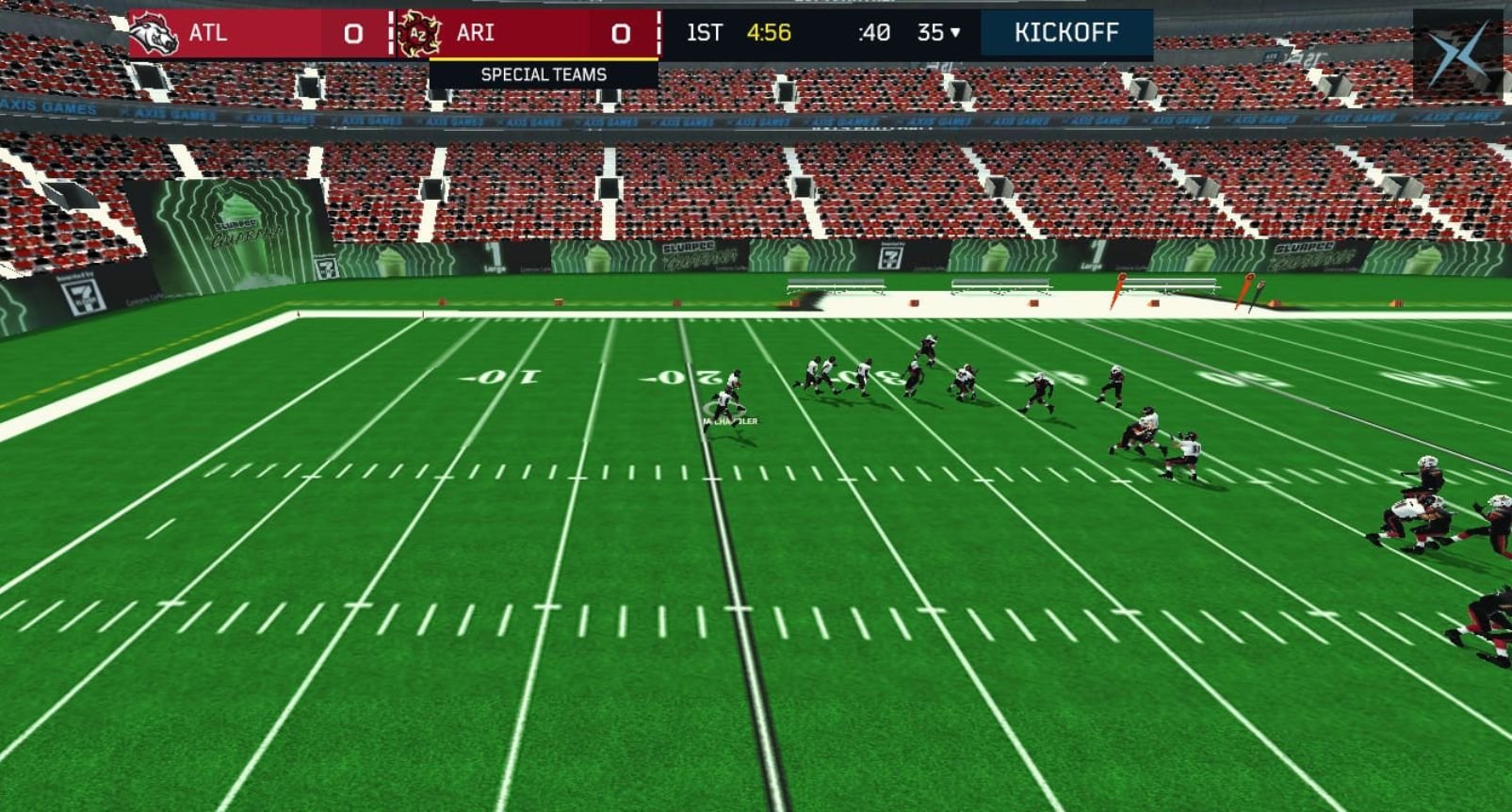- Newsroom
- >
- Unlocking the Power of Gaming: How to Integrate the Next Frontier of Advertising into Your Marketing Mix

Unlocking the Power of Gaming: How to Integrate the Next Frontier of Advertising into Your Marketing Mix
In the colossal arena of the entertainment industry, where film and music have enjoyed their long reign as cultural and financial behemoths, gaming has slowly and steadily emerged as an unexpected giant.
The financial figures put this into perspective. Recent data shows that the average budget for a AAA game in 2024 is $60 million, compared with $50-100 million for the average Hollywood film. The total size of the film and music industries are worth around $80 billion and $28 billion, respectively. And gaming? It may surprise you to know that the total games industry is currently worth $189 billion and is projected to exceed $200 billion in the next two years.
To address this massive market, in-game advertising has quickly grown and evolved as a viable solution for advertisers to connect with the 3.3b global gaming audience. And many of the world's largest agencies have taken notice, building out dedicated gaming offerings as a core focus to help bring their clients into the space. Examples include dentsu Gaming, Publicis Play, Havas Play, and Omnicom’s LevelUp.
Gaming compared to other channels
While ad budgets are increasingly moving to gaming, interest in the platform has outpaced our understanding. It’s clear from conversations with brands and agencies that many advertisers are unsure how to integrate gaming into their omnichannel strategies and understand its broader impact. Many also compare it to traditional advertising channels and formats to categorize it alongside what has come before and what’s familiar, holding gaming up against CTV, social media, or digital OOH.
However, we know that a large portion of the immense gaming audience is not currently reachable through many of these traditional channels due to factors such as steadily falling TV viewership, the rising use of online ad blockers, and social media networks that continue to struggle with declining reputation and users leaving the platform — three big reasons why more and more brands are turning to gaming.
What separates in-game from these other channels is largely due to the 3D world in which gaming exists and a hot, new buzzword in the industry, 'attention'. Firstly, advertising within a 3D virtual space offers completely new and innovative ways for brands to connect with players that were previously unreachable and in a way that capitalizes on the unparalleled attention levels that the medium provides. Regarding attention, our CEO, Itamar Benedy, had the following to say.
“We live in an attention economy with a lot of content at our fingertips. However, popular pastimes, including TV, music, social media, and surfing the web, are all subject to distraction and an active avoidance of ads. The average global ad-blocking rate is now at 37%; 52% of all consumers stop paying attention when ads come on the TV, and 65% skip video ads. Unsurprisingly, this has put into question the quality and value of ad delivery and media impressions. In contrast, we know that gaming is a captivating, immersive, and lean-forward medium. Gamers don’t multitask and dedicate time and space to their gaming experience. Gaming is also a powerful source of identity, competition, community, and cultural currency.”
Gaming audiences are completely leaned in when they’re playing a game. No bathroom breaks during commercials, no pausing or skipping videos, just a 100% focus on the game at hand, and that level of attention and engagement cannot be found anywhere else.
Digital Out of Home makes a lot of sense if you had to categorize gaming as a channel. However, you can also think of gaming outside the traditional channel framework. When asked how gaming compares to other channels, on stage at Advertising Week New York, our EVP of Global Sales, Nerissa Macdonald, shared the following.
“Gaming is an accelerant rather than a traditional media channel. Intrinsic in-game ads take the best bits from other digital advertising formats and package them in a non-intrusive, highly impactful, and future-ready format”.
How to integrate gaming into your full funnel strategy
Programmatic intrinsic in-game advertising allows advertisers to serve their ads within placements that naturally feel like part of the gameplay, allowing them to make meaningful connections with players.
Returning to our Digital OOH reference, examples include billboards within a virtual city or banners alongside a sports stadium or racetrack. These ads can influence decisions up and down the funnel depending on your campaign goals, from awareness and recall to favorability all the way through to purchase intent and even e-commerce behavior and foot traffic post-gaming impression.
Measuring success within gaming is becoming increasingly more sophisticated as well, thanks to more industry standardization, led in part by key partnerships Anzu has formed with industry measurement leaders like the IAS, who Anzu worked with to develop first-to-market solutions to validate the efficacy of in-game media, and with Lumen, who collaborated with Anzu on an extensive two-year study into the impact of attention on digital advertising and gaming.
Regarding media strategy, use gaming to amplify your existing awareness efforts, extend your reach, and connect with incremental, hard-to-reach audiences that span all ages, races, and genders. Use gaming for creative and innovative ways to message your brand’s unique value and influence brand favorability and memorability with your core audiences during their favorite part of the day and when they’re most attentive — while they’re gaming.
To succeed in gaming and make meaningful connections with players, advertisers can start by using a Crawl-Walk-Run framework.

Crawl — Start with an initial test to prove channel efficacy and brand effectiveness. Focus on upper funnel objectives and performance metrics like impressions, viewability, and VCR.
Walk — Iterate on your initial campaign by testing contextual and behavioral audiences across specific games and genres. Try sequential messaging and test your impact on mid to lower-funnel metrics like brand recommendation and purchase intent, measured via a brand lift study.
Run — Dial in your always-on gaming audience and stay in front of them throughout the year. Build upon reach, frequency, and share of voice. Make a real splash with custom brand integrations within premium titles and use more sophisticated brand lift analyses to look at overall impacts on brand perception, post-campaign purchase behavior, foot traffic, and the impact of gaming on the full customer journey.
Intrinsic in-game success stories
Increasing brand awareness for P&G
A great example of a recent upper funnel campaign comes from P&G. They wanted to boost the influence of several of their brands in Puerto Rico to regain value and maintain relevance in a market where many people hadn't experienced their products.

In-game ads allowed them to quickly and easily get many of their brands, including Gillette, Old Spice, Febreze, and Charmin, in front of the right players in a way that complemented their gaming experiences. The campaign achieved a 97% in-view rate, well above the IAB requirement of 50%, with 7.4m ads played, reaching 779K unique players.
Driving footfall for 7-Eleven and Quiktrip
Moving to the bottom of the funnel, convenience store chain 7-Eleven used intrinsic in-game ads to drive footfall and bring customers back to their stores post-lockdown through a campaign for their 7-Eleven Slurpee.
The campaign was a huge success and a great case study of how a digital ad campaign can drive real-world impact. The ads had a CPM of $0.02 vs. the $0.035 industry average, with an average viewability rate of 97% and a VCR of 95% vs. the 85% industry average.

More recently, the US convenience store chain Quicktip ran a similar in-game ad campaign using geo-targeting to reach players near their stores with ads based on the latest offers and discounts to help drive footfall. The campaign, which ran over 12 months, was incredibly successful. Oracle Moat reported a 98% average viewability rate and a 96% on-screen rate for the ads.
Showcasing Tommy Hilfiger’s latest designs
Many brands use gaming to reach customers at every marketing funnel stage, pushing them from the awareness stage to recall and onto making a purchase. This is exactly what Tommy Hilfiger did recently. The iconic clothing label wanted to generate buzz, connect with new and potential customers, and drive purchase intent for their Classics Reborn Spring campaign.
%20(2).jpg?width=1605&height=862&name=Copy%20of%20BLOG%20(1605%20%C3%97%20862%20px)%20(2).jpg)
They ran a series of stunning in-game ads targeting male and female players with specific gender creatives to capture attention and drive purchases. A brand lift study with Comscore found the ads generated a 24-point lift in brand recommendation, a 23-point lift in purchase intent, and a 20-point lift in brand favorability. When asked about the campaign's success, Heather Morales, Senior Director of Media at Tommy Hilfiger, had the following to say.
“The campaign had a huge impact on brand favorability, changing the opinion of exposed gamers and driving future consideration of purchase and a higher likelihood of recommending our brand to a friend”.